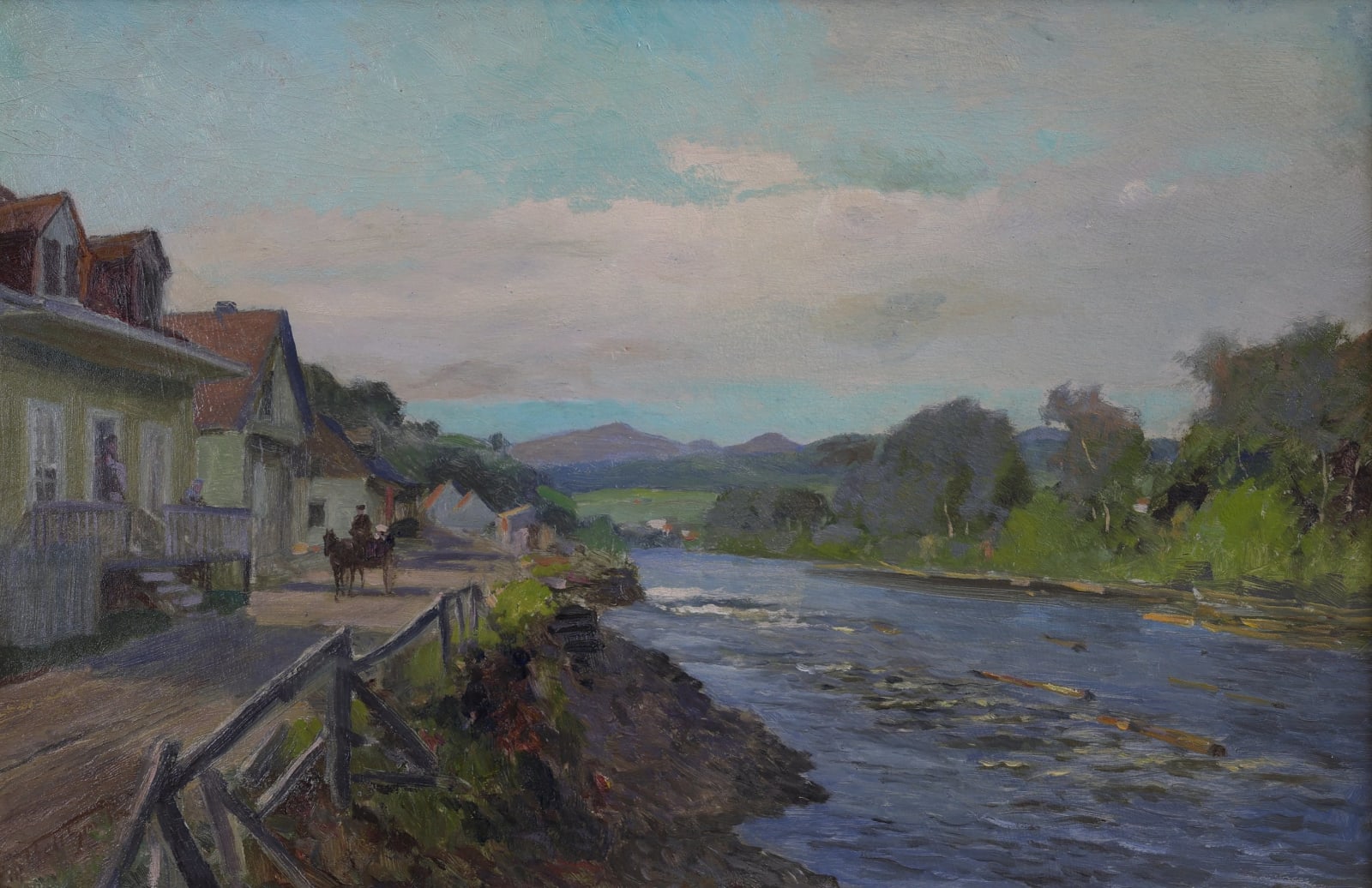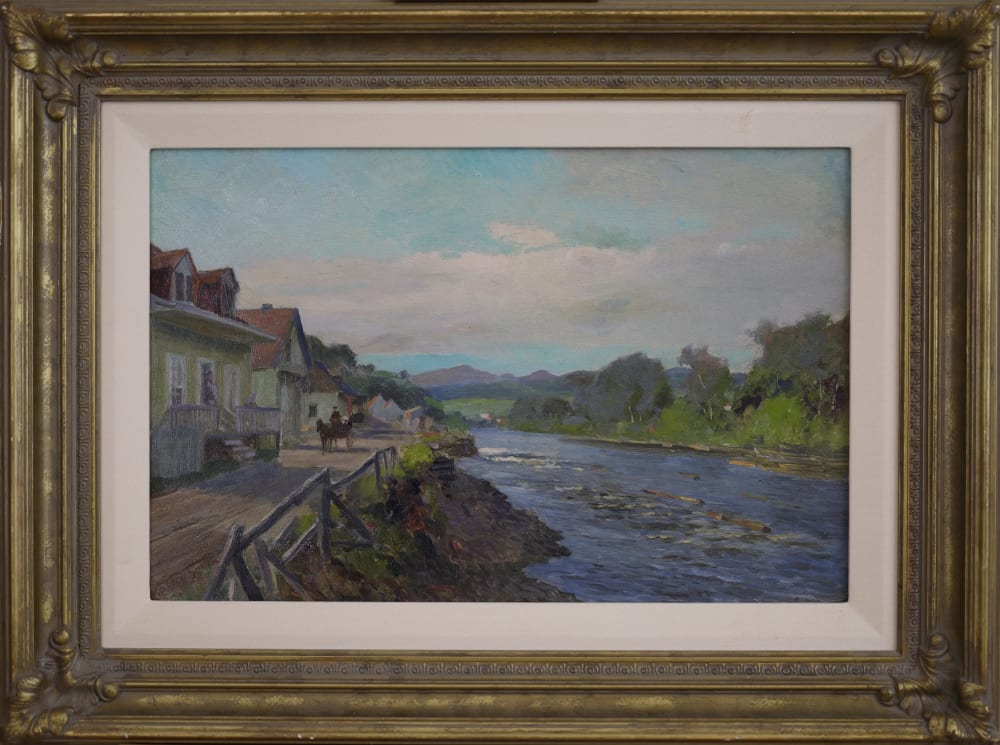Frederic Marlett Bell-Smith English Canadian, 1846-1923
Further images
By the River (c. 1910) captures the quiet rhythm of small-town life along a waterway, where a row of modest clapboard houses with pitched roofs and verandas opens onto a dirt road as a lone rider passes by. A river flows in the distance, its rippled surface leading the viewer’s eye toward distant blue-grey hills. The sky, painted in breathtaking turquoises, soft sky blues, and crisp whites, feels both refreshing and expansive, lending a sense of majesty to the scene and drawing the eye naturally toward the hills far off in the distance. Bell-Smith balances human presence with the natural environment, his gentle, naturalistic palette breathing nature while his light, painterly touch conveys the shimmer and movement of water, foliage, and air.
Frederic Marlett Bell-Smith (1846–1923) was an English-born Canadian painter celebrated for his evocative landscapes and city scenes that bridged European academic training with a distinctly Canadian sensibility. Born in London, he studied at the South Kensington Art Schools before immigrating to Canada in 1866. His artistic reputation grew steadily, and he became widely recognized for capturing both the majesty of Canada’s wilderness and the intimate rhythms of daily life.
In addition to his painting career, Bell-Smith played a formative role as an educator. During the 1880s, he taught at the Ontario School of Art and Design in Toronto, where his emphasis on strong academic foundations and plein-air technique directly shaped the work of John William Beatty. Beatty later went on to teach at the Ontario College of Art, mentoring notable Canadian artists such as Doris McCarthy, thus extending Bell-Smith’s influence across multiple generations of Canadian painters. By the River, c. 1910, is an oil on Academy Board that measures 12.3 x 18.5 in and is signed on the bottom left.






